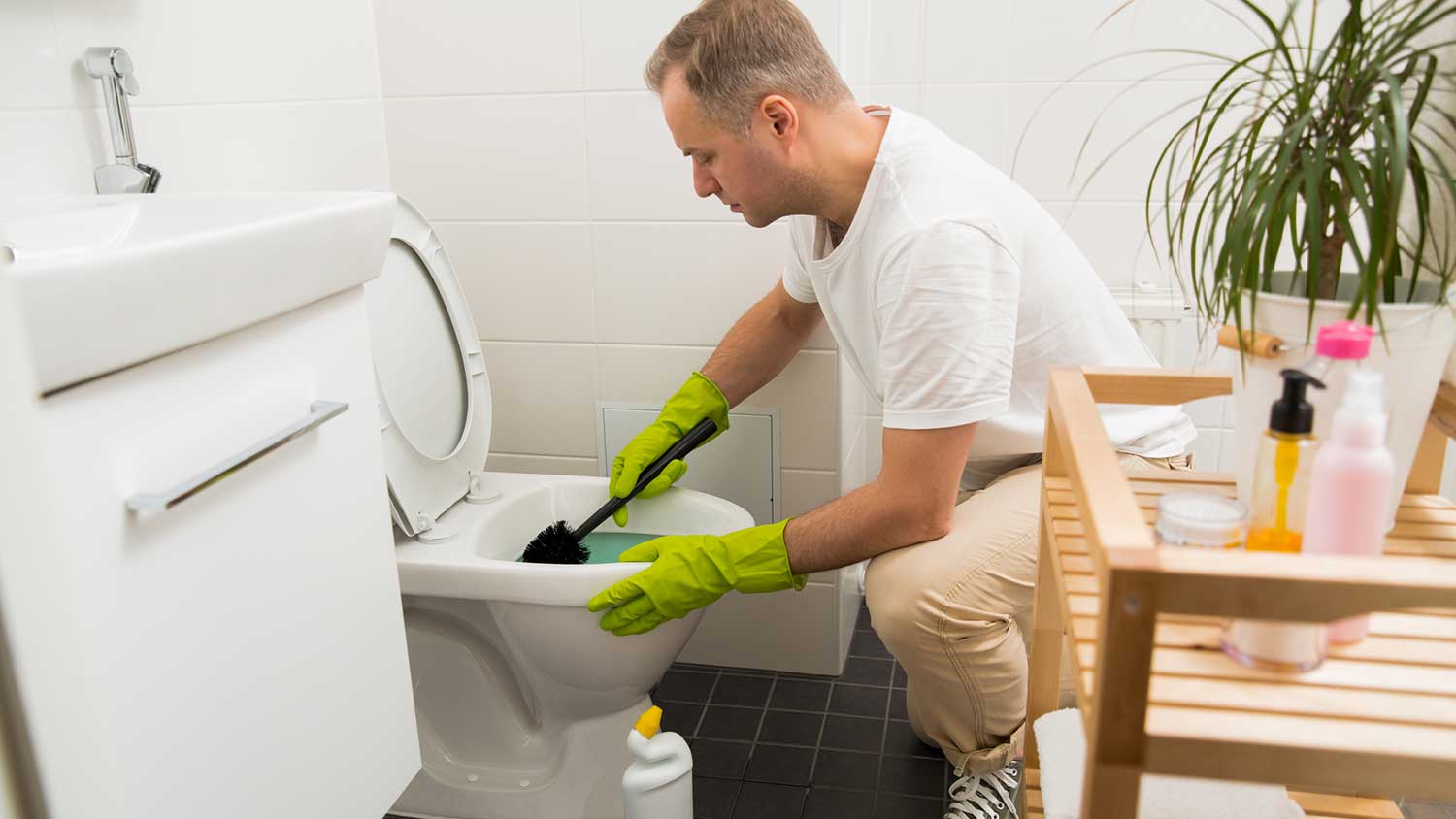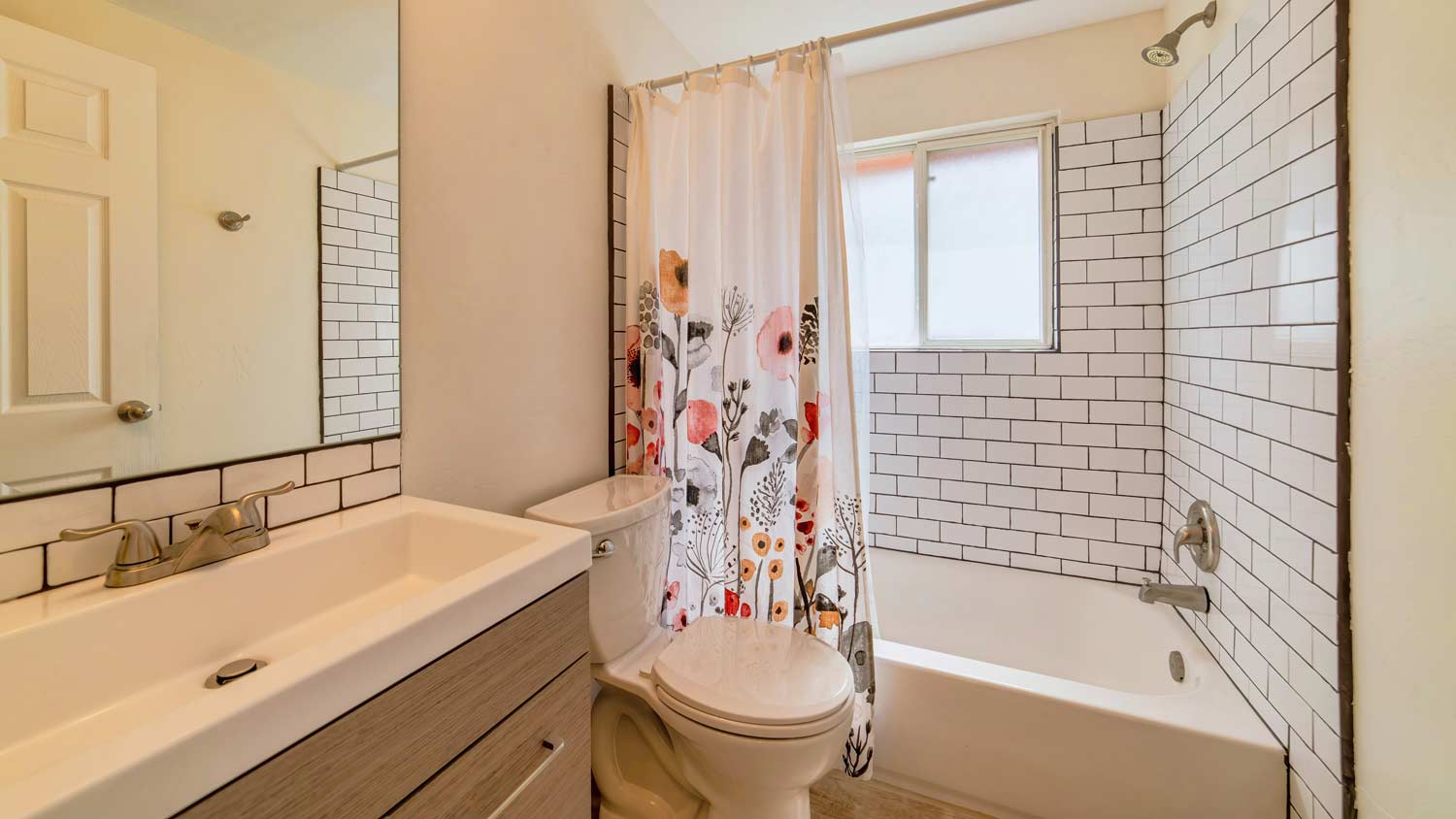Why Is Mold Growing in My Toilet? 3 Common Causes and Solutions
Get rid of the moldy mess in your toilet


Mold in your toilet can result from poor bathroom ventilation.
It’s common to find mold in a toilet you don’t use often.
If you don’t clean your toilet regularly or properly, mold can grow.
Clean a moldy toilet yourself or call a pro.
Mold thrives in damp and dirty places, so it’s no surprise that toilets are a popular breeding ground for this slimy substance. The good news: While a moldy toilet may look unpleasant, it’s fairly easy to clean. But to prevent it from coming back, it’s important to understand why mold is growing in your toilet in the first place. Let’s look at the most common contributing factors.
1. Infrequent Use
If you don’t use the toilet often (maybe it’s in your basement or attached to a guest bedroom), the water will remain stagnant and become more likely to foster mold.
How to Fix It
To get rid of mold in the bathroom toilet, follow these steps:
Put on a mask, gloves, safety goggles, and clothing that protects your skin.
Turn on the exhaust fan or open a window to ventilate the area.
Pour one cup of white vinegar into the toilet bowl.
Pour another cup of vinegar into the toilet tank (in case there’s mold there as well).
Sprinkle baking soda into the bowl and under the rim.
Let it sit for an hour.
Use a toilet brush to scrub the entire toilet bowl and rim.
Let it sit for another 15 minutes.
Flush the toilet and avoid using it for a few hours.
Even if you don’t use the toilet much, try to flush it every day. This will help keep the water moving and prevent the mold from coming back.
2. Poor Ventilation

Mold likes to grow in humid areas with little ventilation, which is why it’s commonly found in toilets and other damp parts of your bathroom. If your bathroom doesn’t have an exhaust fan or a window, your toilet may be particularly susceptible to mold.
How to Fix It
Use the instructions above to remove mold from your toilet. To reduce the chance of it returning, use an exhaust fan or crack a window open when bathing or showering. Alternatively, you can run a dehumidifier to reduce bathroom moisture.
Don’t have a fan? Consider installing one. Not only can bathroom exhaust fans reduce humidity and moisture (and potentially prevent mold and water damage), but they can also remove unpleasant odors.
3. Improper Cleaning
When you don’t clean your toilet regularly, it’s easier for mold to grow inside the bowl. Similarly, if you aren’t cleaning it thoroughly (maybe you’re just giving it a quick spray rather than scrubbing it), you could end up with mold growing in your toilet.
How to Fix It
Use the same method listed above to remove mold from a dirty toilet. Going forward, clean your toilet at least once per week with this method:
Put on gloves and safety glasses.
Apply toilet cleaner under the rim, close the lid, and let it sit for 10 minutes.
In the meantime, apply a cleaning spray to the exterior of the toilet. Wipe it away with a paper towel or rag.
Scrub the bowl with a toilet brush.
Close the lid and flush.
Clean the toilet brush with a disinfectant spray and let it sit for a few minutes.
Rinse the brush with hot water in your tub or shower.
Spray the toilet brush basin with the disinfectant spray.
When to Call a Pro
According to the Environmental Protection Agency (EPA), if the moldy area is less than 10 square feet, you should be able to clean it yourself. Toilets generally fit into that category. Just remember to wear the appropriate safety gear, including a mask, glasses or goggles, gloves, and protective clothing.
On the other hand, if you have a larger or persistent mold problem, it’s better to contact a local mold testing and remediation pro. These professionals don’t just remove mold; they also sanitize the area and take steps to ensure the mold doesn’t come back.
Frequently Asked Questions
Both mildew and mold come from fungi. One of the main differences is that mildew’s texture is dry and powdery, whereas mold is fuzzy and slimy. In addition, mildew isn’t very thick, while mold looks three-dimensional. Also, mildew is typically light in color, whereas mold comes in various shades, including green and black.
Yes, you can clean a toilet tank with white vinegar. Before you do, shut off the water supply to the toilet. Then, flush it to empty the tank. Next, combine one part vinegar with one part water in a spray bottle and spray the mixture inside the tank. Let it sit for 10 minutes, then rinse away the vinegar by pouring clean water into the tank. Make sure the tank is empty, then dip a scrub brush in vinegar and clean the tank’s inside walls. Turn the water back on and flush again to rinse away the vinegar.















